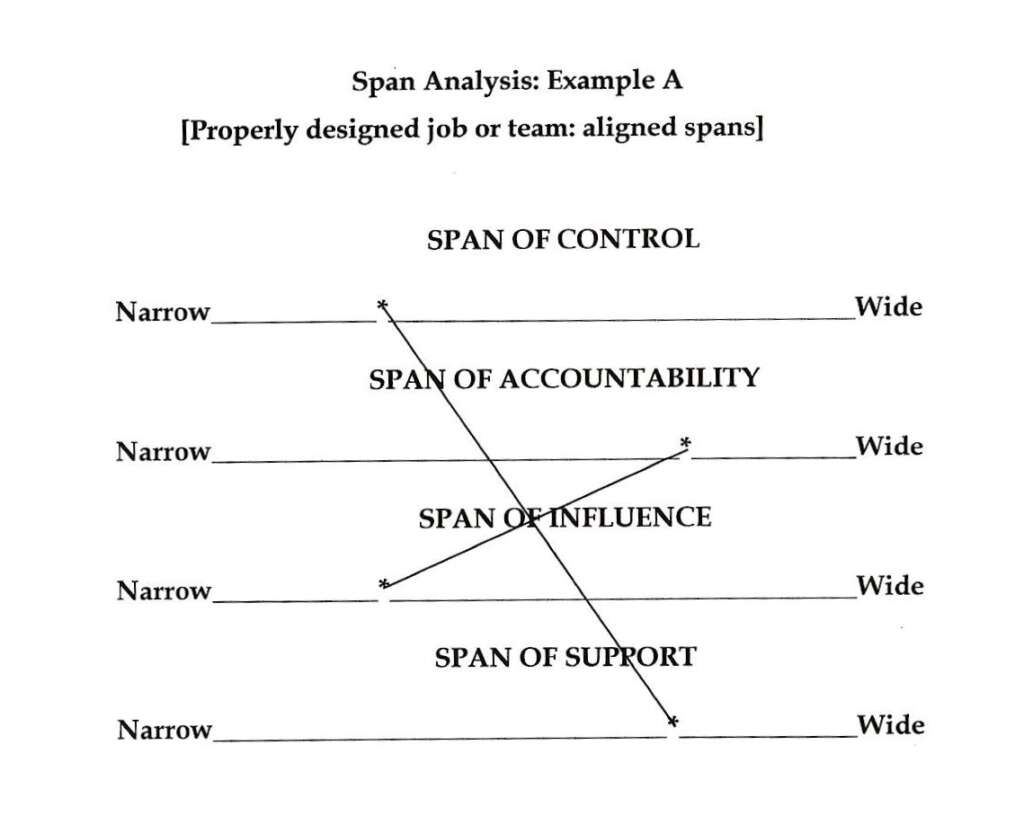
For any organization to operate at maximum efficiency and effectiveness, the supply of resources for each project team must equal the demand. In other words, span of control plus span of support must equal span of accountability plus span of influence. Using the Span Analysis matrix to determine span of control, accountability, influence and support, one can engage as a job occupant or member of a team in reviewing existing spans and most appropriate spans for efficiency and effectiveness.
Step One: Place a mark on each of the four lines, based on the job occupant’s or team members’ assessment of span for themselves and other members of the team.
Step Two: Draw a line between the span of control mark and the span of support mark [forming the supply of resources line]. Draw a second line between the span of accountability mark and span of influence mark [forming the demand for resources line].
Step Three: If the two lines intersect, forming an “X,” then demand equals support (at least roughly) and the job or team is properly designed for sustained performance. If the lines do not cross, then the spans are misaligned. If resources (span of control plus span of support) are insufficient for the task at hand, strategy implementation will fail [ineffectiveness]. If recourses are excessive, underutilization of assets and poor economic performance can be predicted [inefficiency].
Here are two examples of a job or team analysis.
The first displays a properly designed job or team:
In this case, the job occupant or team doesn’t have much control but does have a rather high level of accountability. Fortunately, this person or team is able to focus on their own work (influence) but is provided with a fairly substantial amount of external support—making the condition of low control and high accountability somewhat less challenging.








